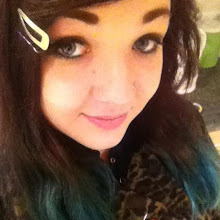He is not a traditional artist of such but more of a collector of objects and often went though book stores and secondhand stores trying to find interesting objects. Although he is a sculpture as well but is best known for his box work.
Untitled (The Hotel Eden):
In the later half of the 1940s, Cornell moved away from his early Surrealist inspirations and began making art that was more closely tied to the current movement, Abstract Expressionism. The Aviary boxes, with their clean, white walls, have a stark look that differs from his earlier boxes. Cornell was delighted when Willem de Kooning once admired the "architecture” of the series. When I first saw this piece i was a little confused because i did not understand what was going on. I thought the bird was trying to hypnotise people or the audience but with further research i found that Cornell was obsession with birds. He loved watching them play in the birdbath in his backyard and his mother often would chastise him for letting birds eat crumbs off the kitchen table. There are many possible interpretations for the birds housed in the Aviary boxes. The fragile, flying creatures may have reminded Cornell of the innocent spirit that he often admired in children. Or perhaps the birds represent Cornell himself - a lonely creature, trapped in a cage, and the spiral box witch the bird is pulling a piece of string from could symbolise that he is under the birds spell because he is obsessed by them, Cornell used a framed box made of wood to present his work in.
In the later half of the 1940s, Cornell moved away from his early Surrealist inspirations and began making art that was more closely tied to the current movement, Abstract Expressionism. The Aviary boxes, with their clean, white walls, have a stark look that differs from his earlier boxes. Cornell was delighted when Willem de Kooning once admired the "architecture” of the series. When I first saw this piece i was a little confused because i did not understand what was going on. I thought the bird was trying to hypnotise people or the audience but with further research i found that Cornell was obsession with birds. He loved watching them play in the birdbath in his backyard and his mother often would chastise him for letting birds eat crumbs off the kitchen table. There are many possible interpretations for the birds housed in the Aviary boxes. The fragile, flying creatures may have reminded Cornell of the innocent spirit that he often admired in children. Or perhaps the birds represent Cornell himself - a lonely creature, trapped in a cage, and the spiral box witch the bird is pulling a piece of string from could symbolise that he is under the birds spell because he is obsessed by them, Cornell used a framed box made of wood to present his work in.
Cornell created this box to memorialize the 19th-century ballerina, Marie Taglioni. Under the blue glass tray of glass ice cubes is a mirrored level containing necklaces, sand, crystal, and rhinestones. The words on the inside of the lid tell one of the stories about the dancer: On a moonlit night in the winter of 1835, a Russian highwayman stopped Taglioni's carriage and ordered her to dance for him "upon a panther's skin spread over the snow beneath the stars." In memory of this occasion, Taglioni "formed the habit of placing a piece of artificial ice in her jewel casket." Cornell's work is often trying to preserve something - an event, a performance, a person - that cannot be preserved. Just as real ice melts, memories fade into eternity.
I really like the story of why he created this piece it adds depth to the artwork and makes it more interesting because when i first saw it i did not know anything about the box or why there was fake ice inside. So when i was reaching about the box when i found the story of why he made this it made me smile because if it actually happend then this box tells the sotry of a story.
Also it adds historical value to the piece if they can link the story back to be true witch i am hoping it is.
After Cornell saw Lauren Bacall's first movie, To Have and Have Not, he became infatuated with the beautiful young actress. Bacall's face fascinated the artist and inspired him to create a work that celebrated his image of the actress as a purely innocent creature, ignoring the sexuality she displays in the film. The penny Arcade portrait of lauren Bacall is a game with a little ball that rolls past images of skyscrapers and Bacall at different ages, carrying viewers through time. The faces of Bacall appear behind blue-tinted, segmented glass, evoking the silent films and 'peep show' penny arcades of Cornell's past. Cornell wanted the viewer to "travel inclined runways, starting in motion compartment after compartment with a symphony of mechanical magic of sight and sound borrowed form the motion picture art into childhood, fantasy and through the streets of New York through tropical skies". Cornell once said that he preferred film to live theatre. The cinematic close-up shot of a beautiful woman, like the one in the box, provided the illusion of intimacy, while allowing him to maintain a chaste distance.
I love interactive artwork, when you can interact with a piece of art i tend to get the meaning of it more and i find them more interesting.
http://www.josephcornellbox.com/menu.htm << This is a link to a website I found about Joseph Cornell and loads more information and there is also a gallery.





No comments:
Post a Comment